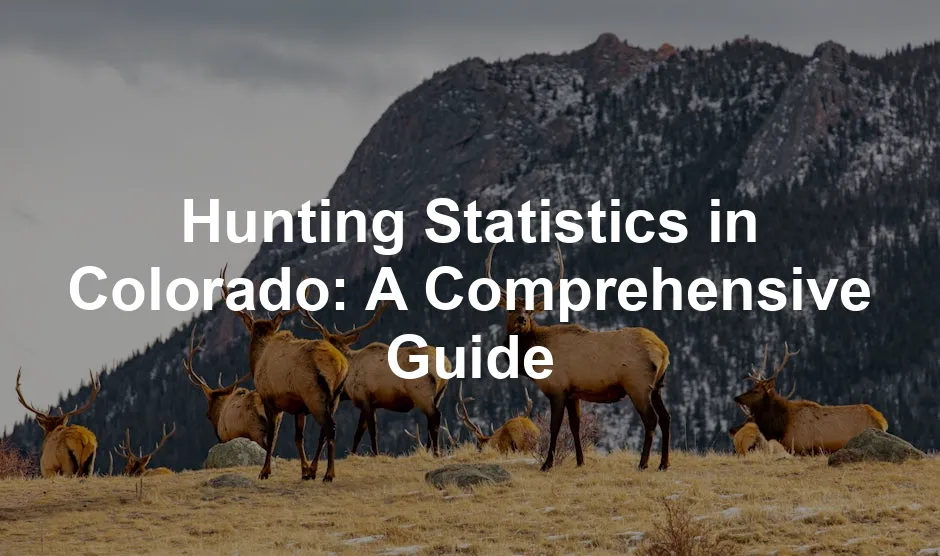Introduction
Hunting in Colorado is more than just a pastime; it’s a cherished tradition. Nestled in the heart of the Rocky Mountains, this state draws thousands of hunters each year. With its stunning landscapes and diverse wildlife, Colorado offers a hunting experience that feels like stepping into a nature documentary—minus the cameras and narrators.
For many, hunting is a rite of passage. It connects families and friends, creating bonds over campfires and shared stories of the one that got away. But beyond its cultural significance, understanding hunting statistics is crucial for both novice and seasoned hunters.
Why should you care about statistics? Think of them as your trusty compass in the wild. They guide your decisions, help you gauge competition, and give you insights into trends over the years. Whether you’re eyeing elk, deer, or bear, knowing the draw odds and harvest rates can be the difference between a successful hunt and a long trek back to camp with empty hands.
In this guide, we will cover key statistics that every hunter should know. We’ll dive into license sales, draw odds, harvest rates, and the trends that have shaped Colorado’s hunting landscape over the years. So, gear up, grab your favorite snack, and let’s get into the nitty-gritty of Colorado hunting statistics!
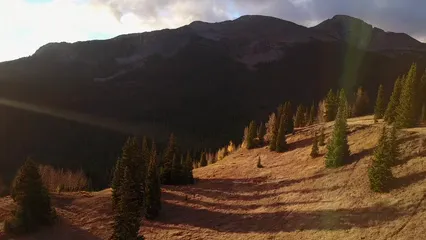
Understanding Colorado’s Hunting Landscape
Overview of Hunting in Colorado
Colorado is a veritable smorgasbord of game. From majestic elk to elusive deer, the state offers a variety of species for hunters to pursue. In fact, elk hunting here is almost a rite of passage, with many claiming it’s the best in the country. And don’t forget about bears, pronghorn, and mountain lions—oh my! Each of these creatures presents its own unique challenges and rewards.
Managing this hunting paradise falls to Colorado Parks and Wildlife (CPW), the agency responsible for overseeing hunting regulations and gathering statistics. They play a vital role in ensuring sustainable wildlife populations while providing hunters with the data they need to make informed decisions.
Speaking of informed decisions, having the right hunting gear is crucial! From high-quality binoculars to tactical backpacks, being well-equipped can make all the difference in your hunting success.
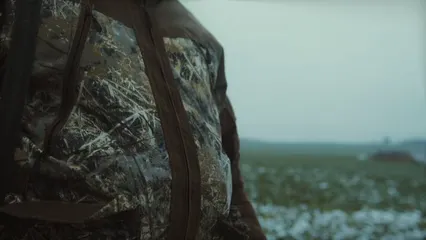
License Sales and Applications
Let’s talk numbers. In recent years, Colorado has seen a significant uptick in hunting interest. For instance, there were nearly 238,000 applications for elk licenses with only about 123,000 available. Deer hunting saw about 218,000 applications for just 102,000 licenses. That’s a lot of hunters vying for limited spots!
Post-pandemic participation rates have surged, leading to increased competition for coveted licenses. As hunters return to the field, understanding these statistics becomes essential. They not only indicate popularity but also reflect the health of animal populations and the impact of hunting regulations.
To make your hunting experience even more enjoyable, consider investing in a fixed blade hunting knife. It’s a must-have tool for any serious hunter, perfect for field dressing and other tasks that require precision.
The CPW provides detailed reports on license sales and applications. These reports help hunters strategize by revealing trends over the years. Whether you’re a first-time applicant or a seasoned veteran, familiarizing yourself with these statistics can enhance your overall hunting experience.
By keeping an eye on the numbers, you can better prepare for your next adventure in the wild. And who knows? Maybe this year will be the year you score that trophy elk or buck!

Big Game Hunting Statistics
Elk Hunting Statistics
Elk Draw and License Information
Applying for an elk license in Colorado? Buckle up! The draw system is your ticket to the wild. Each year, Colorado Parks and Wildlife (CPW) sets up a draw for elk licenses. The application period typically opens in early February and closes in early April. Don’t forget to mark those dates!
So, how’s the competition? In recent years, approximately 238,000 applications were submitted for about 123,000 available elk licenses. That’s a lot of hunters with dreams of a trophy elk! Historical data shows that success rates can vary, but overall, they hover around 17%—not bad, considering the fierce competition.
Want to improve your odds? Consider applying for a secondary draw. This gives you another shot at snagging one of the leftover licenses. Just remember, those preference points matter! They give you a leg up in the draw system. The more points you have, the better your chances of getting that coveted license.
And while you’re at it, why not enhance your field experience with a wildlife trail camera? It’s perfect for monitoring game and can provide valuable insights into animal behavior before your big hunt.
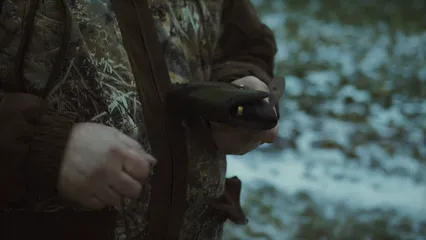
Harvest Reports and Population Estimates
Now, let’s talk numbers. Recent harvest statistics reveal that over 39,000 elk were harvested in Colorado last season, with a success rate of about 17%. Not too shabby, right? This number fluctuates based on factors like weather conditions, hunter density, and elk herd health.
Speaking of herds, elk populations are carefully monitored by CPW. Recent estimates suggest that there are around 280,000 elk in Colorado. These numbers help shape hunting regulations and quotas. The goal is to maintain a healthy population for both hunters and the ecosystem.
Over the years, adjustments to hunting regulations have occurred due to population trends. If elk numbers increase significantly, CPW may raise the quota. Conversely, if numbers decline, they may restrict access. The key is balance—ensuring the elk population remains robust while allowing hunters to enjoy the thrill of the chase.
For a deeper understanding of elk hunting in Colorado, check out this comprehensive guide on colorado elk hunting statistics.
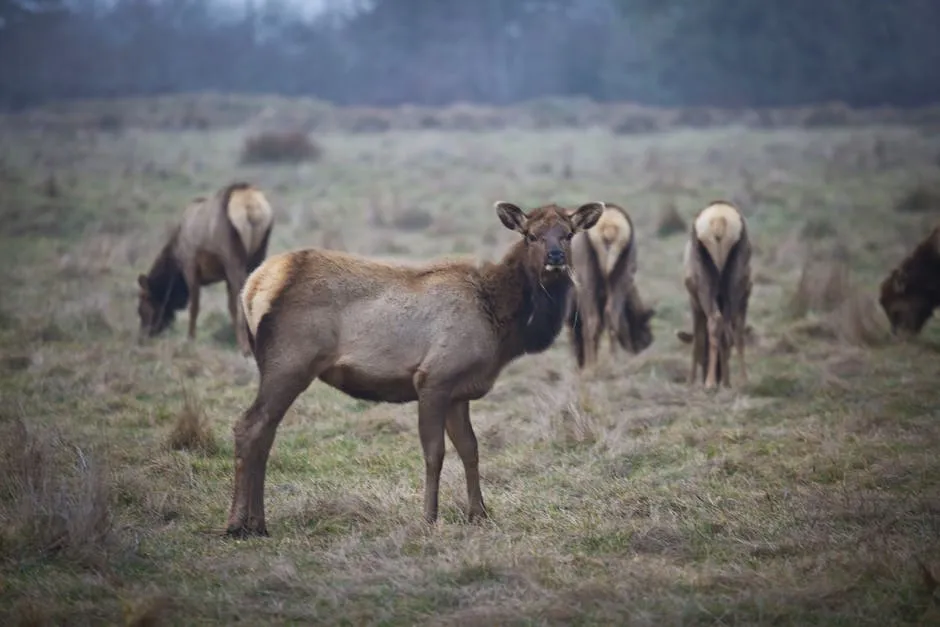
Deer Hunting Statistics
Deer Draw and License Information
Ready to chase some deer? Understanding the draw process is essential. Colorado’s deer licenses operate on a draw system, similar to elk. The application period opens in early February and closes in early April, just like elk.
In recent years, CPW reported nearly 218,000 applications for about 102,000 deer licenses. Talk about stiff competition! Historical trends show that success rates for deer hunters can vary from 18% to 25%, depending on the unit and season.
Preference points play a role here too! Accumulating points will improve your odds in future draws. Keep track of your points—every little advantage counts when you’re vying for that license.
While you’re preparing for your deer hunt, don’t forget to stock up on some men’s outdoor camo clothing. Blending into your surroundings can be the key to a successful hunt!
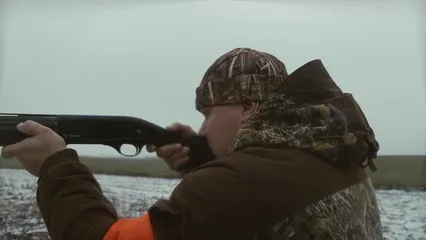
Harvest Reports and Population Estimates
Let’s break down some numbers! Last season, approximately 38,000 deer were harvested across the state. The success rate for deer hunters tends to fluctuate, but it’s a solid way to gauge an area’s hunting potential.
Population estimates indicate around 600,000 deer in Colorado. This number is crucial for CPW as they adjust hunting regulations to promote healthy populations. When deer populations are high, more licenses may be issued. Conversely, if populations dip, restrictions may tighten.
In summary, understanding deer hunting statistics can make a significant difference in your planning. Be aware of the trends, quotas, and harvest statistics to enhance your hunting experience. Happy hunting!
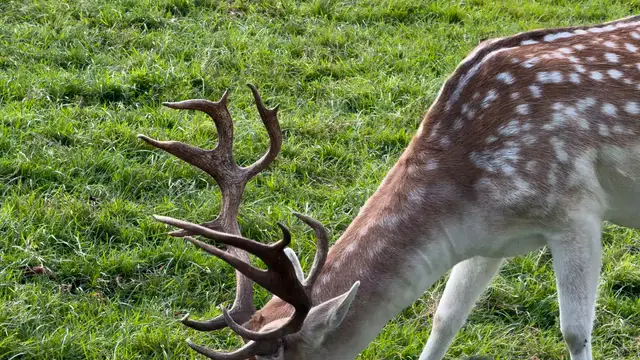
Other Game Species Statistics
Let’s not forget about the other game species roaming the Colorado wilderness! Bear hunting is gaining traction, with approximately 4,000 bears harvested last season. Pronghorn hunting also remains popular, with a harvest of about 9,000 animals and success rates around 30%. Mountain lions? They’re elusive, but hunters managed to take about 700 lions last year.
Regarding draw systems, each species has its own quirks. For example, bear licenses are often available over-the-counter, making them accessible for last-minute hunting trips. In contrast, pronghorn and mountain lion licenses depend on a draw system, with varying success rates. The competitive nature of these draws makes knowing the statistics essential for hunters keen on landing that perfect hunt.
And while you’re planning your next adventure, make sure you have the right survival gear handy. A 72-hour survival kit can be a lifesaver if you find yourself in a bind!
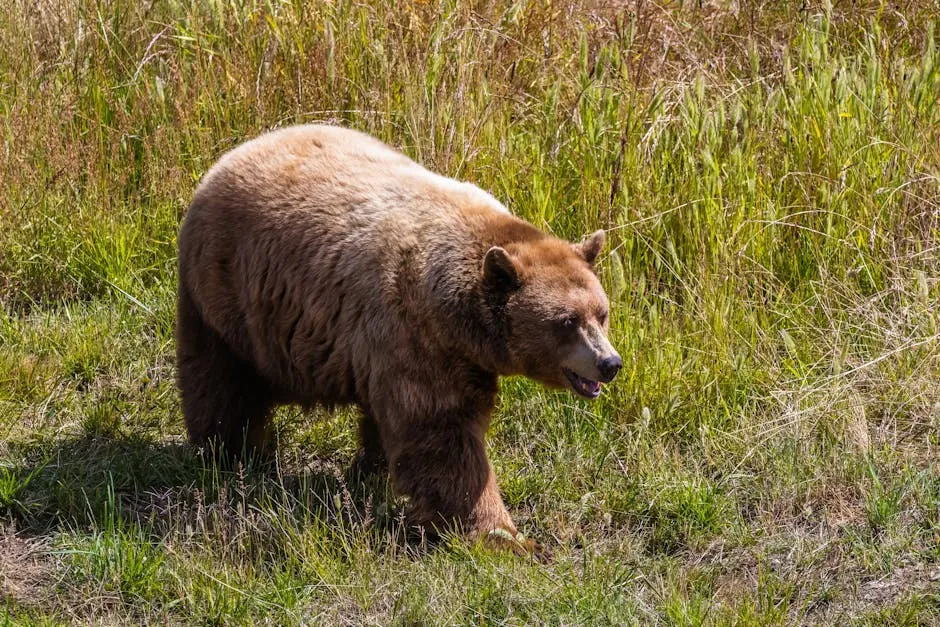
Future Projections
As we look ahead, Colorado’s hunting seasons are set to evolve. Current trends hint at a continued surge in hunting applications. The demand for licenses is skyrocketing. For example, last year, nearly 238,000 hunters applied for elk licenses, but only about 123,000 were available. This pattern is likely to persist, leading to increased competition and crowded trails.
Legislation will play a key role in shaping the future. Recent changes in application fees have made hunting more accessible. With lower costs, more people are stepping into the great outdoors. This influx could strain wildlife populations if not managed well. Colorado Parks and Wildlife (CPW) is acutely aware of this challenge and is working to strike a balance.
Conservation efforts also impact hunting statistics. Programs aimed at protecting habitats and maintaining healthy animal populations will be crucial. It’s not just about the numbers; it’s about preserving the ecosystem. Successful management practices will ensure sustainable hunting for years to come.
Wildlife management practices will further influence hunting trends. The potential reintroduction of gray wolves sparks debate among hunters and conservationists alike. Some fear competition for elk, while others believe it could lead to healthier herds. Balancing these interests will be vital for CPW as they navigate future regulations.
In summary, the future of hunting in Colorado looks promising. However, it requires careful attention to legislation, conservation, and wildlife management. Staying informed will be key for hunters as they adapt to this changing landscape.

Conclusion
Hunting in Colorado is a vibrant tapestry woven with tradition, skill, and a deep respect for nature. Throughout this article, we’ve explored essential hunting statistics that highlight the popularity of this pastime. From license sales to draw odds, these figures paint a vivid picture of the hunting landscape in the Centennial State.
License sales have soared, reflecting the growing interest in hunting. The competition for limited licenses has intensified, making it more critical than ever for hunters to understand the draw system. The statistics reveal that nearly 238,000 applications were submitted for elk licenses last year, while only about 123,000 were available. This fierce competition underscores the importance of being well-informed and strategic in your approach.
Moreover, harvest rates provide valuable insights into the health of game populations. With around 39,000 elk and 38,000 deer harvested last season, these numbers reflect not only hunter success but also the efficacy of wildlife management practices. Colorado Parks and Wildlife (CPW) works tirelessly to ensure sustainable populations, balancing the needs of wildlife with the desires of hunters.
Staying informed about hunting regulations is crucial for responsible hunting practices. With changing laws and evolving management strategies, hunters must keep abreast of the latest updates. CPW provides valuable resources to help navigate these complexities. Their website is a treasure trove of information, including draw statistics, harvest reports, and population estimates.
In conclusion, understanding hunting statistics in Colorado is not just about numbers; it’s about fostering a culture of responsible hunting. As interest in hunting continues to grow, it’s essential for everyone involved to prioritize sustainability and conservation. By utilizing resources from Colorado Parks and Wildlife, hunters can ensure they are well-prepared for their adventures in the wild. So, gear up, stay informed, and enjoy the thrill of the hunt!

FAQs
What is a preference point, and how does it affect my ability to draw a license?
Preference points are like golden tickets for hunters in Colorado. They’re part of the draw system designed to manage limited licenses for big game. When you apply for a license, you can earn a preference point if you don’t get drawn. This point gives you a better chance in future applications. The more points you have, the higher your odds of snagging that coveted license. Think of it as a loyalty program for hunting. It’s a way to reward persistence. If you want to hunt elk or deer, accumulating preference points can significantly improve your chances over time. However, there’s a catch! Some species have different systems, and not all licenses require points. So, always check the specifics before applying!
When are the application deadlines for hunting licenses in Colorado?
Mark your calendars, folks! Knowing the deadlines can make or break your hunting plans. Here’s a handy breakdown for various species: – **Elk and Deer**: The application period typically runs from early February to early April. You need to submit your application by 8:00 PM MDT on April 2. – **Bighorn Sheep and Mountain Goat**: For these species, the application period also starts in early March and ends in early April. – **Secondary Draw**: If you miss the primary draw, don’t fret! You can apply for the secondary draw from June 20 to June 28. Always check the Colorado Parks and Wildlife (CPW) website for any updates or changes to these dates. Staying informed helps you avoid missing out!
How can I access the latest hunting statistics and reports?
Getting your hands on the latest hunting statistics is easier than you might think! The go-to source is the Colorado Parks and Wildlife (CPW) website. They provide a treasure trove of information, including draw statistics, harvest reports, and population estimates. You can find detailed reports that outline how many licenses were available, how many applicants there were, and how successful hunters were in previous seasons. For example, the CPW offers **Draw Recap Reports** that show pre-draw and post-draw information, helping you understand the odds better. So, if you’re looking to strategize for your next hunt, head over to [CPW’s statistics page](https://cpw.state.co.us/hunting/big-game/statistics) for all the latest and greatest data!
What should I do if I have further questions about hunting regulations?
If you find yourself scratching your head over hunting regulations, you’re not alone! Thankfully, Colorado Parks and Wildlife (CPW) is here to help. You can reach out to them directly for any questions or clarifications. Here’s how to get in touch: – **Phone**: Call 303-297-1192 for general inquiries. They’re usually pretty helpful! – **Email**: Drop them a line at AskCPW@state.co.us for less urgent questions. – **Website**: Navigate to the CPW website for FAQs, regulations, and other useful resources. Don’t hesitate to reach out! The folks at CPW are dedicated to ensuring a safe and enjoyable hunting experience for everyone. Happy hunting!
Please let us know what you think about our content by leaving a comment down below!
Thank you for reading till here 🙂
All images from Pexels

